|
There have been a lot of pre-wound warps going to new homes over the past few days, and lots of people will shortly be trying to put a pre-wound warp on to their rigid heddle loom for the first time. Most of us who started out with rigid heddle looms have probably only ever used the direct method of warping, but it's just as simple to put a pre-wound warp on your loom. There are lots of resources on the internet, a few You Tube videos, but not very much by way of step-by-step photo tutorials, which is my favourite way to learn because it makes it very easy to follow the instructions as you work, without trying to pause a video, or wish it would get to the point, or go a bit more slowly. This is my method, it's largely the same as the one in Inventive Weaving on a Little Loom (UK Book Depository link, they're a great alternative to Amazon for books, or see if your local independent bookshop can get you a copy). First un-chain your warp. You need to identify which end has "the cross". This is a criss-cross pattern put in as the warps are wound which hold the threads the correct order and stops them getting tangled. In the photo above it's on the right hand side, the end also has more ties, including one around the cross itself, and one in the loop above the cross. Do not cut any ties until you have assembled all your equipment. I recommend using lease sticks. These are sticks that you are going to insert either side of that cross to hold your threads. If you are only doing a narrow warp with bulky yarn you can get away with just using your hands (but you are then attached to your loom until you have completed the warping process. You need 2 smooth sticks of some sort. I have some dowel, but you can use bamboo canes or flat pieces of wood (the slats from blinds work well). The first step is to identify the 2 loops either side of your cross. Pull each of the ties in that loop in opposite directions and it should open up. (This is easier when you can do it with 2 hands and don't need one hand to hold the camera!) Once you've opened up your loops slide in a stick, one on each side of the cross. Then attach your sticks together in some way. You can drill a hole through your sticks/dowel and thread through some string, but a loosely wrapped elastic band also works, though you do need to leave enough space between the sticks for the yarn to slide. Only once you have done this can you remove the ties. Be careful... you only want to cut through the ties and not the strands on your warp. Start to spread your warp out on your lease sticks, and work out where you need to start threading your heddle in order to wind your warp on in the centre of your loom. To do this check how many ends your warp has, and divide it by 4, we'll call this number X. Fid the centre of your heddle, and count along X slots. This is where you will start threading your warp through the heddle. The exact method of the next step will now depend on the type of loom you own. If your loom has a removable apron rod (the piece of dowel held in place with texslov cord that you warp your yarn around when direct warping) the next step is simple. If you have a loom with a fixed apron rod (eg Ashford looms), you can either modify your loom to make it removable, or will have to cut the loops open and tie your warp in place on the back beam just as you would normally do on the front beam. This last method will increase your loom waste, and will require care if you want to keep your colours in your warp aligned. To modify your loom you'll need to remove the plastic rods holding the rod in place, and replace them with texsolv cord, this seems to be nigh on impossible to find online in the UK at the moment, but have a search, you may have more luck than me! Slide your back apron rod out of the loops on the texsolv cord. If you can, leave the loops open, it will make it easier to slide the rod back in place once your warp is looped on. You're now going to thread each loop through a slot in your heddle, and slide it on to the back apron rod. The cross will keep the threads in the right order, just make sure you are not pulling a loop from the next group pf threads as you work. If your warp is wool and has got slightly fuzzy as it's been dyed and rinse you may need to give the threads a good wiggle to work them free. This is fiddly to start off with, the process is easier if your lease sticks are wide enough to rest on the frame of your loom, or you can come up with a way to tie them in place. Once you can slide your apron rod in to a second loop of texslov the whole process become much more stable. Keep going across the whole loom, threading loops in order, making sure not to miss out any slots. Once you're done your loom should now look like it does when you use a direct method of warping. Loops of yarn around your back apron rod, and 2 strands of yarn through every slot, and the remainder of the warp dangling off the loom. You are now safe to remove your lease sticks (the eager eyes will spot something odd going on with my sticks and that some threads aren't wrapped around them properly.... safe to say warping is a job that requires 2 hands and not 1 hand for your loom and the other for the camera. Bad things happened that required a little bit of resolving, fingers crossed it won't cause issues as the warp is wound on, make sure your lease sticks are attached together firmly!) Using one hand to add tension to the warp, and the other to turn the back ratchet, slowly wind your warp on to the loom. Add packing paper or cardboard strips to stop the warp threads overlapping one another and causing uneven winding. Cut the figure of eight ties as you wind. Eventually you'll have wound all your warp on to the back beam and be left with the loops that are attached together at the other end of the warp. Cut the ties holding these loops, and cut the loops themselves open. Now take one of the pair of ends that is going through each slot and transfer it to the next hole. You're now ready to attach your warp on to the front apron rod. You can do this by tying directly on to it, but I prefer to lash it on, as that creates less loom waste, and I find it easier to adjust to get an even tension. To do this take a small bundle of warp yarn, fold the end back, then tie an overhand knot creating a loop. Repeat across all of the warp, then take a length of strong smooth, non-elastic thick thread or string (linen or crochet cotton is ideal) and pass it through the first loop of warp yarn, then take your lashing thread and pass it round the front apron rod, pass the thread through the next loop of warp yarn, and then back around the apron rod. Repeat until all the warp is attached, you'll need to keep pulling the yarn through the loops as you work.
Now ease the lashing thread through all the loops until you have a similar tension, and tie off both ends around your apron rod. Tighten the tension slightly and ease the lashing thread until all your loops feel like they have an even tension. You're now ready to start weaving! |
Archives
January 2024
Categories
All
|
Hilltop CloudHilltop Cloud- Spin Different
Beautiful fibre you'll love to work with. Established 2011 VAT Reg- 209 4066 19 Dugoed Bach, Mallwyd, Machynlleth,
Powys, SY20 9HR |

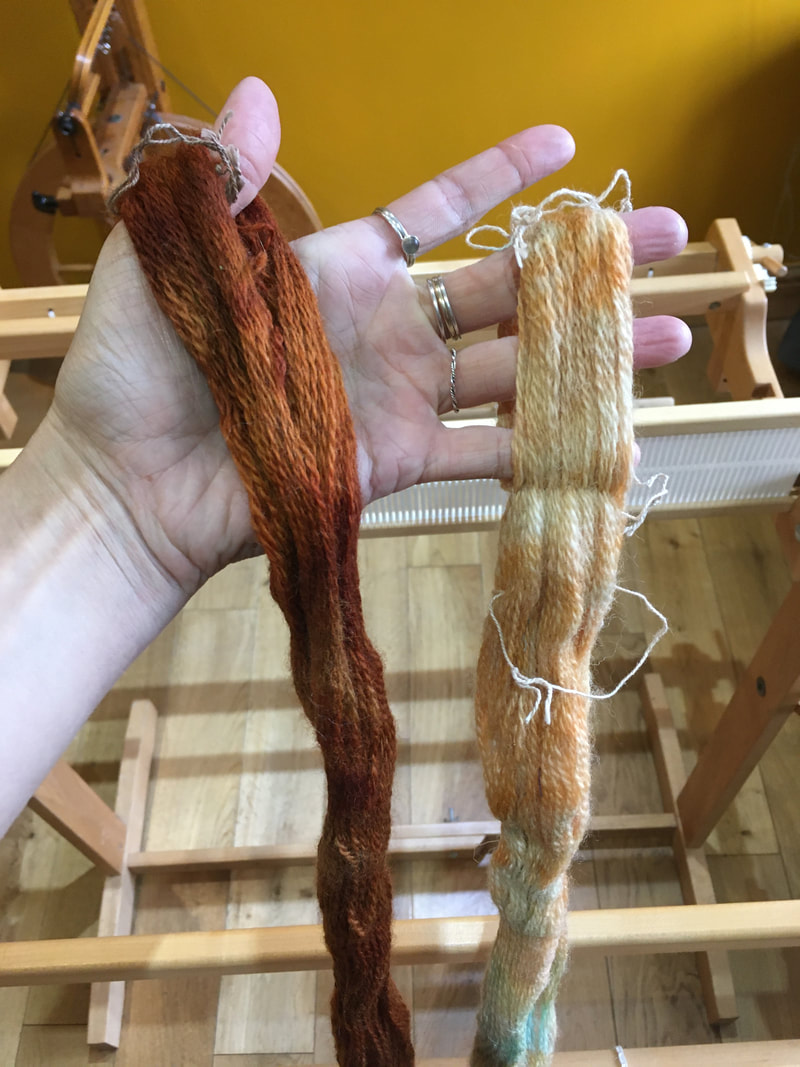
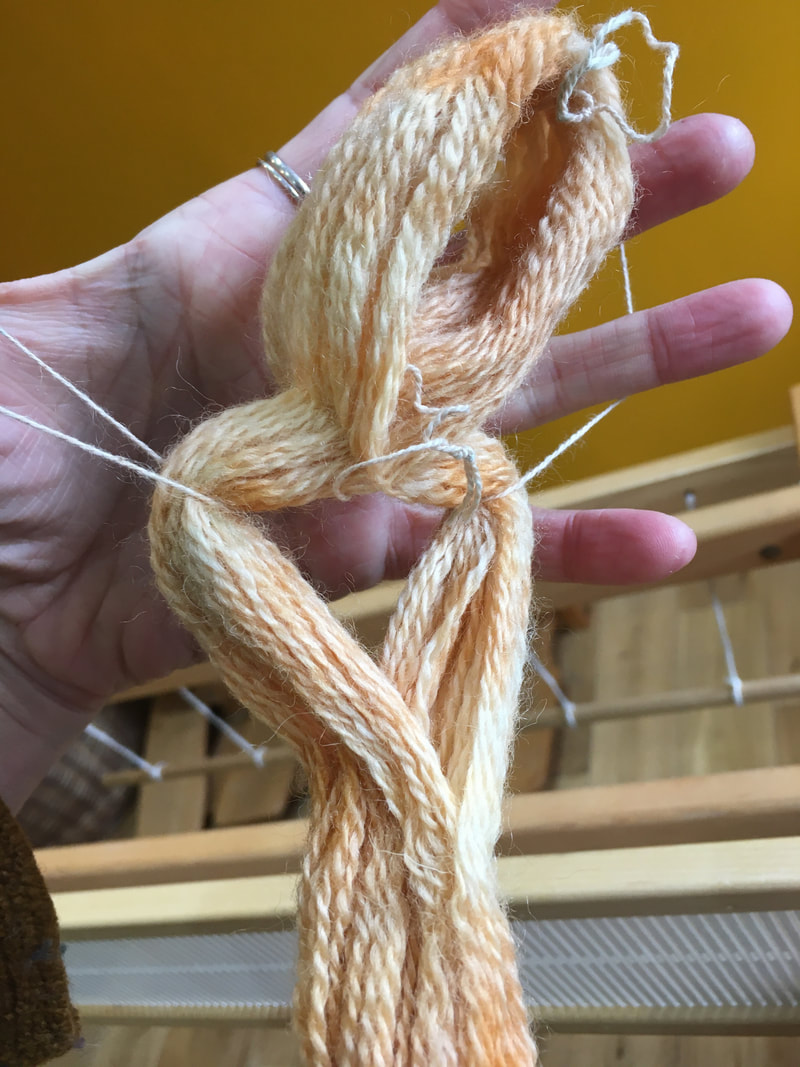
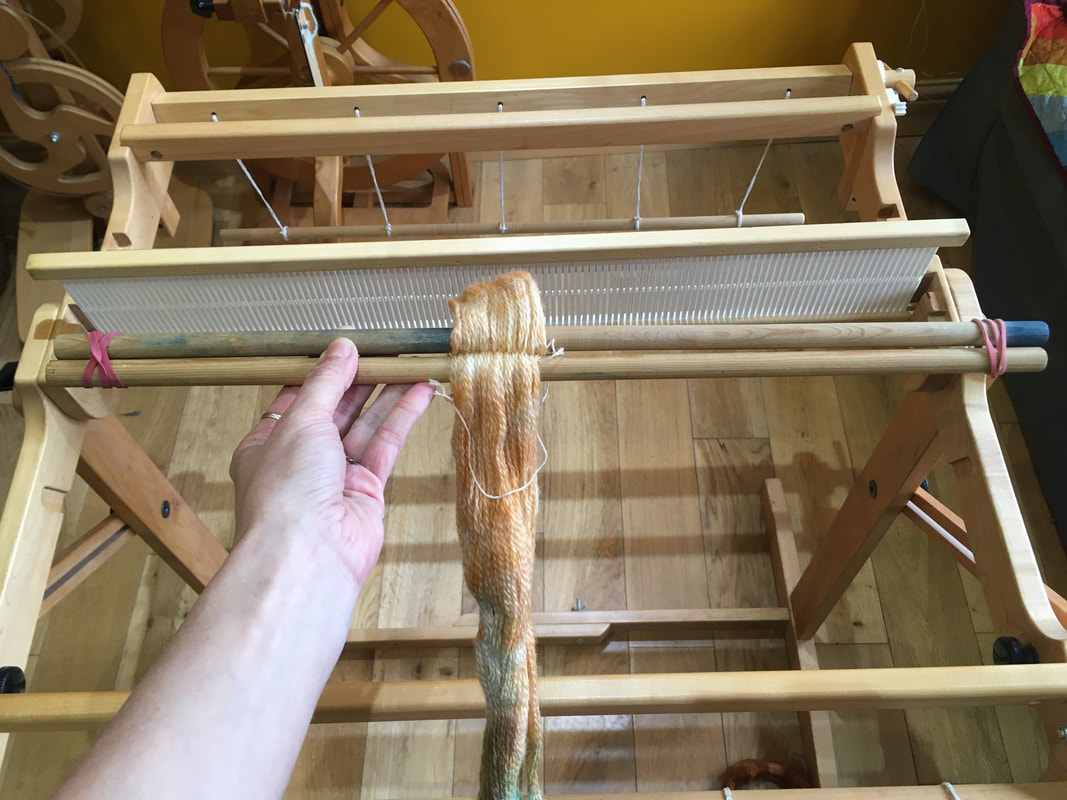
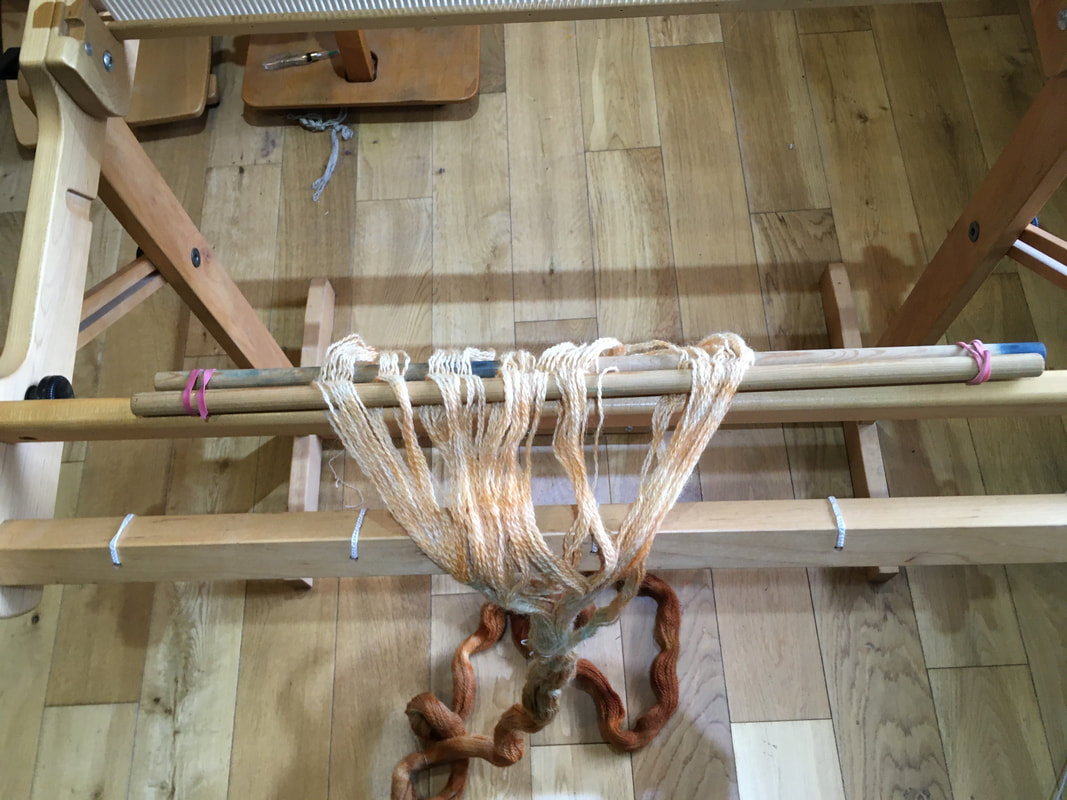
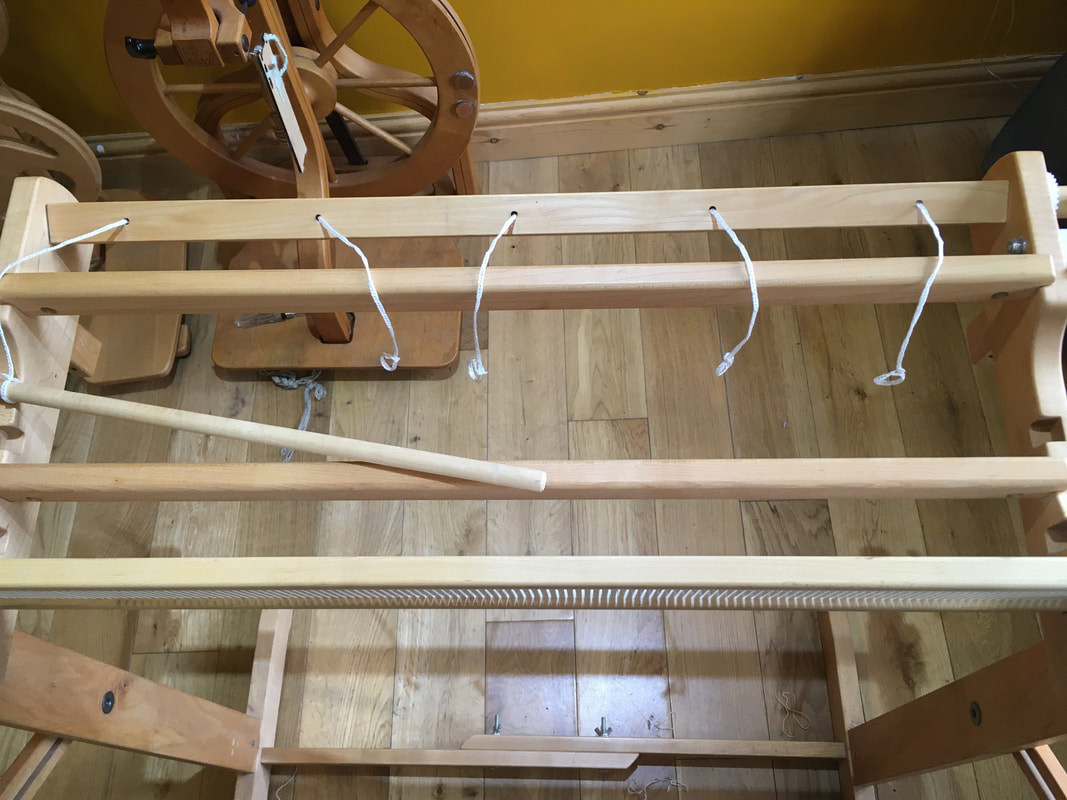
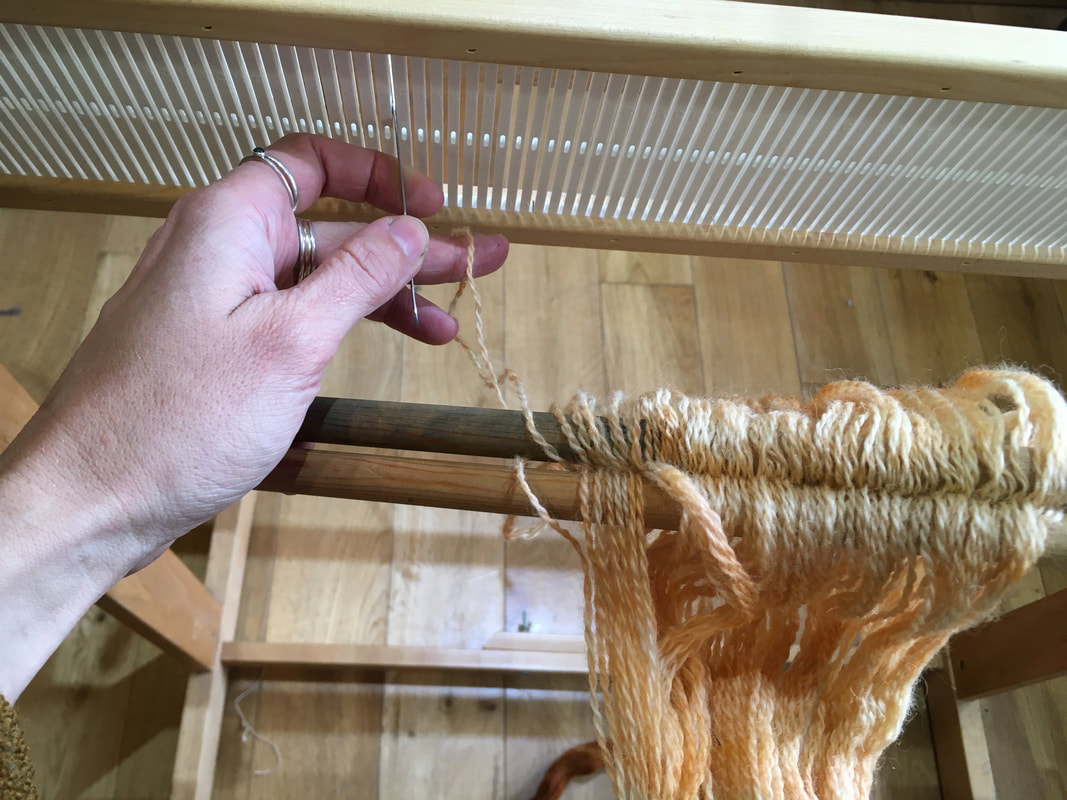
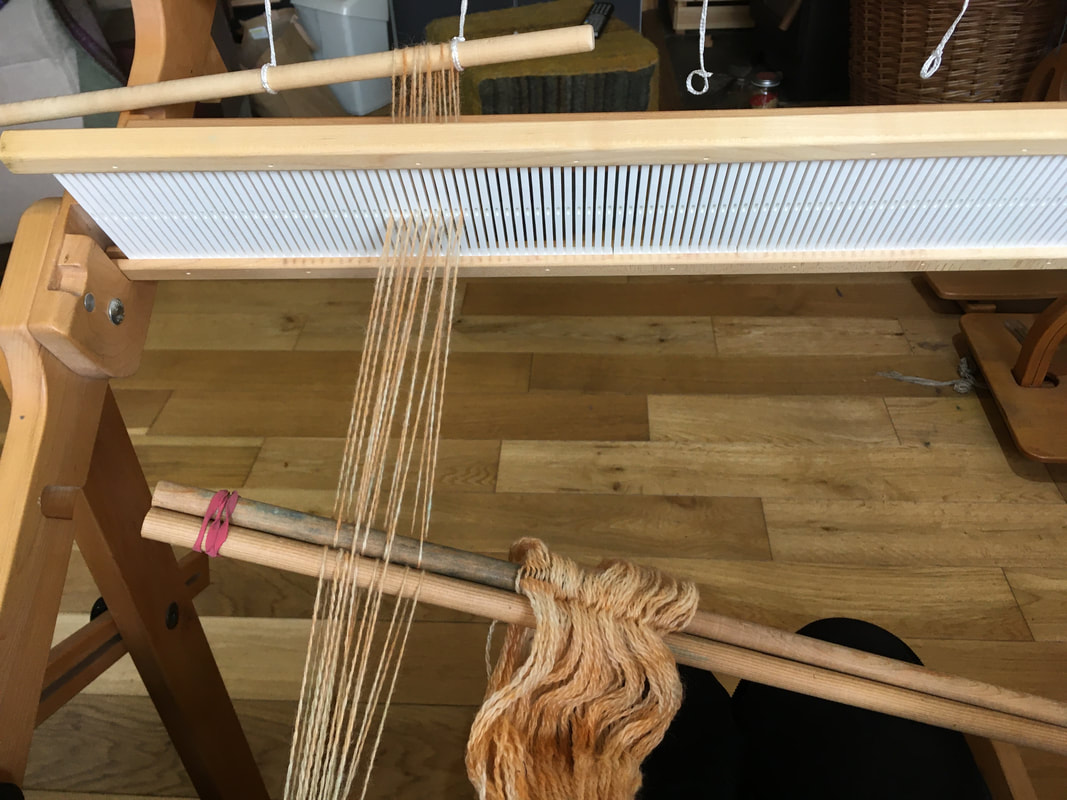
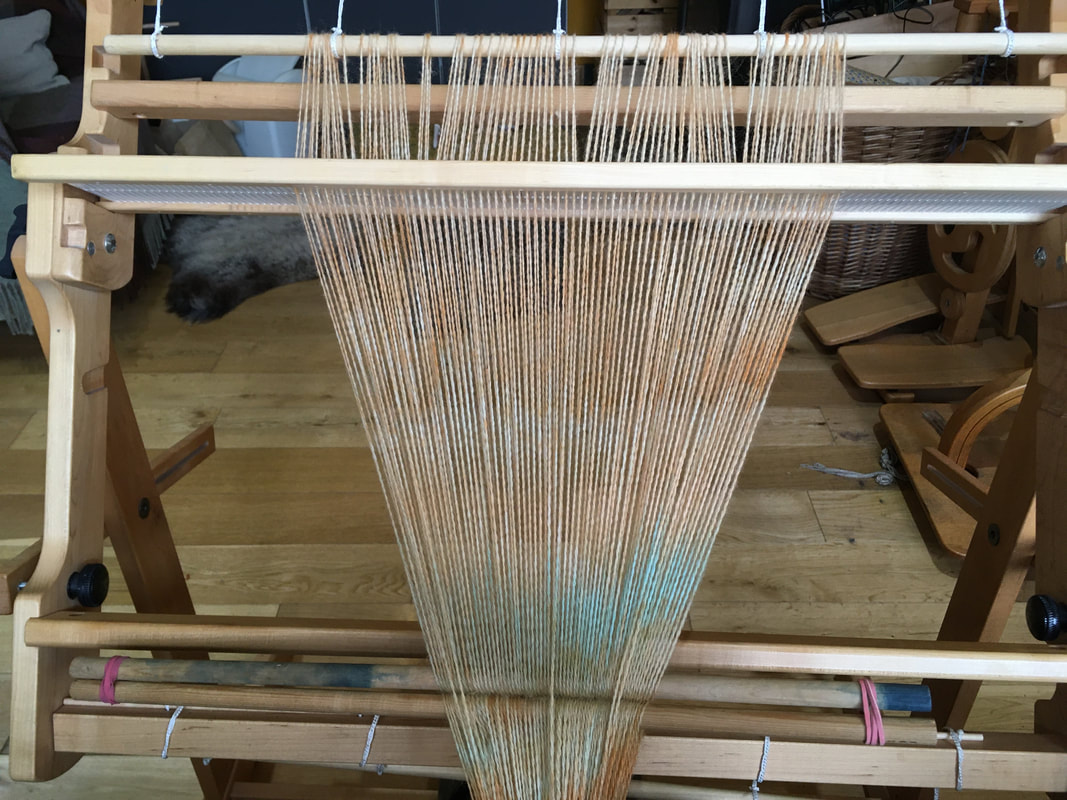
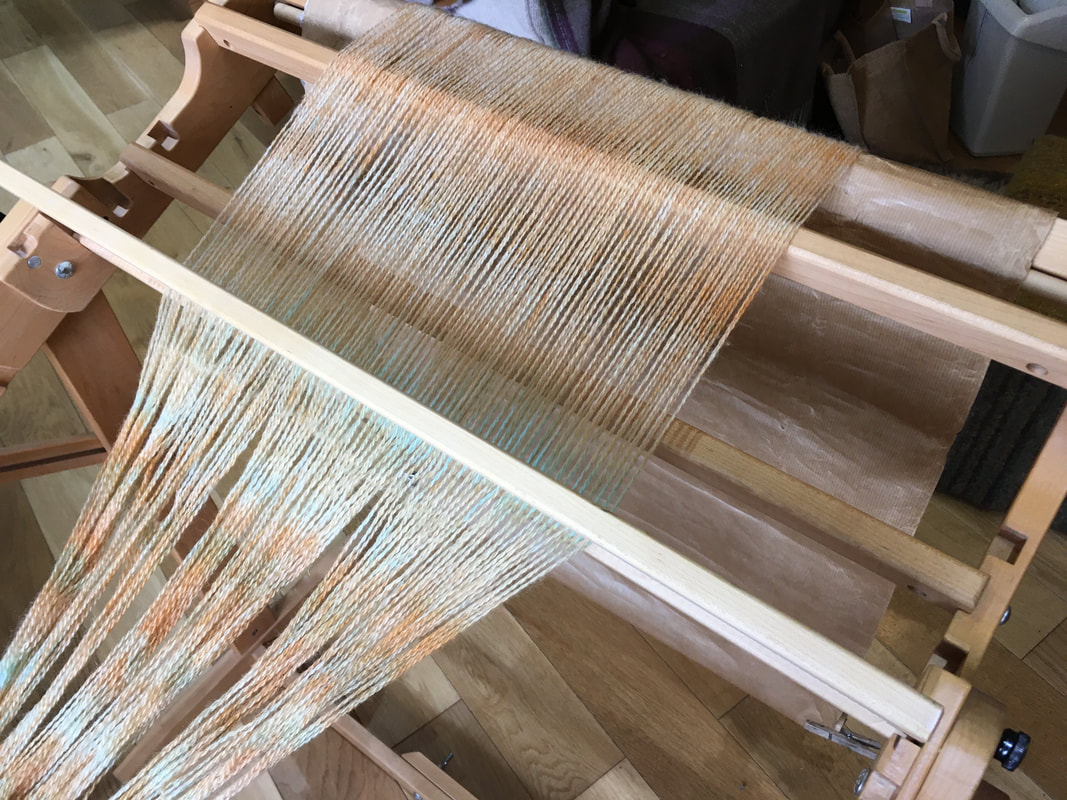
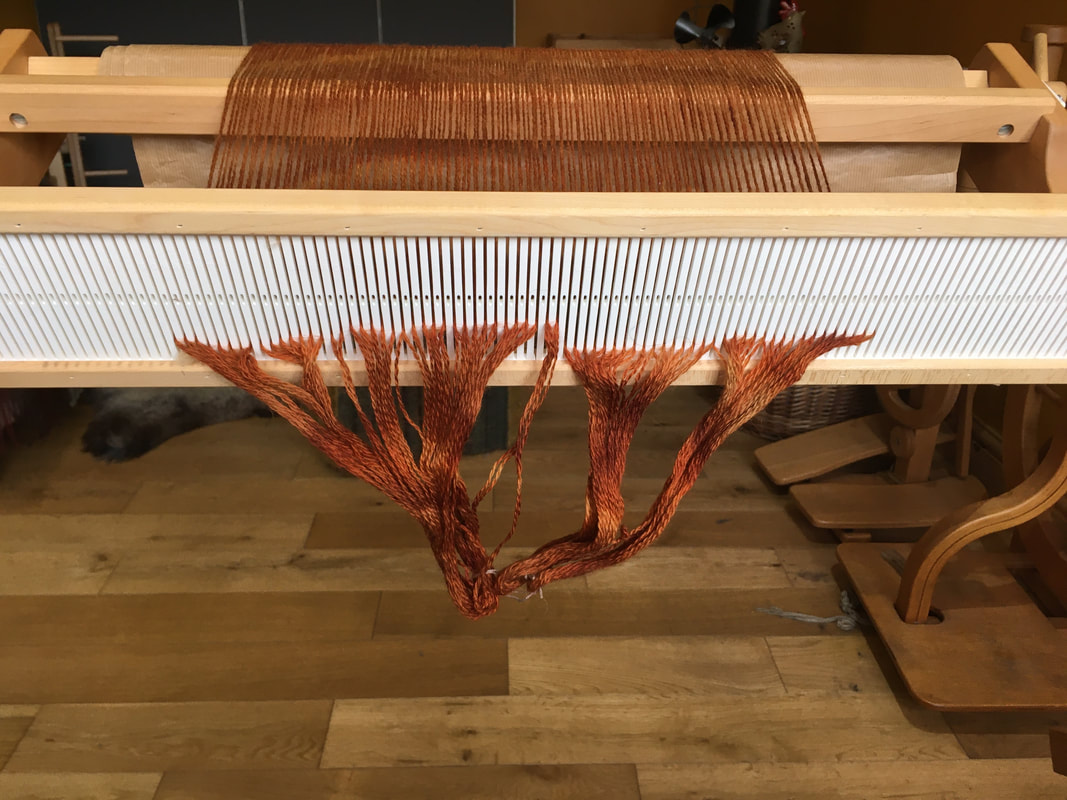
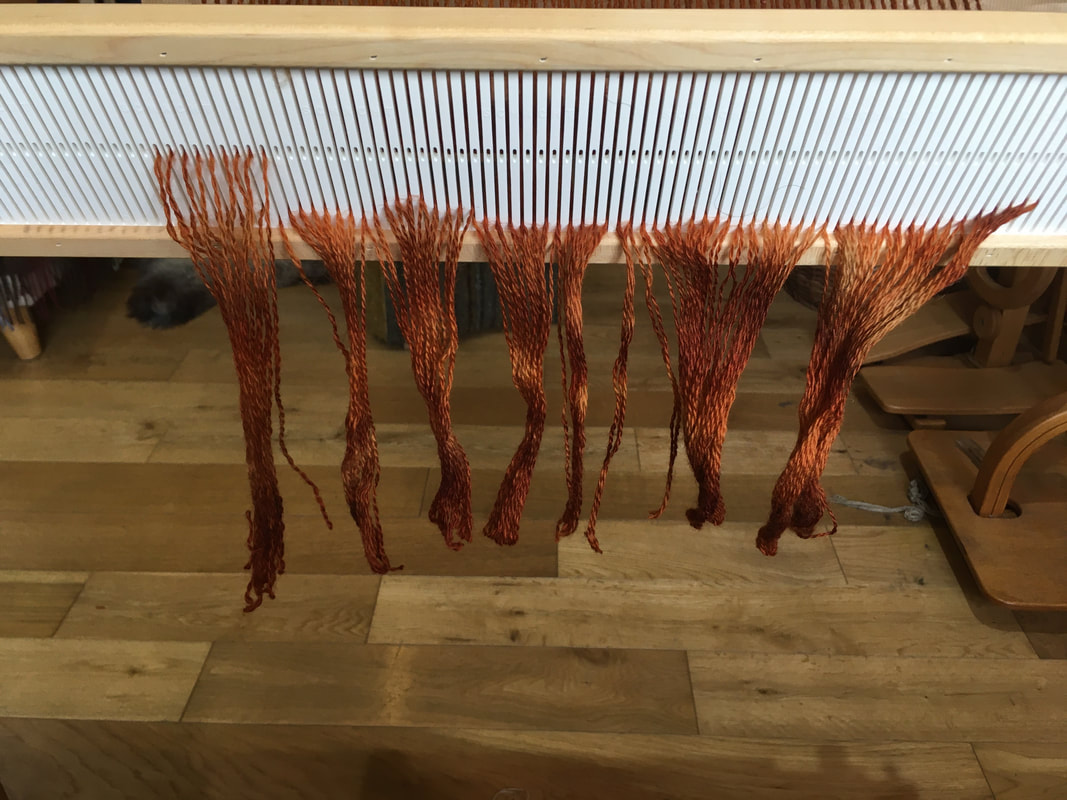
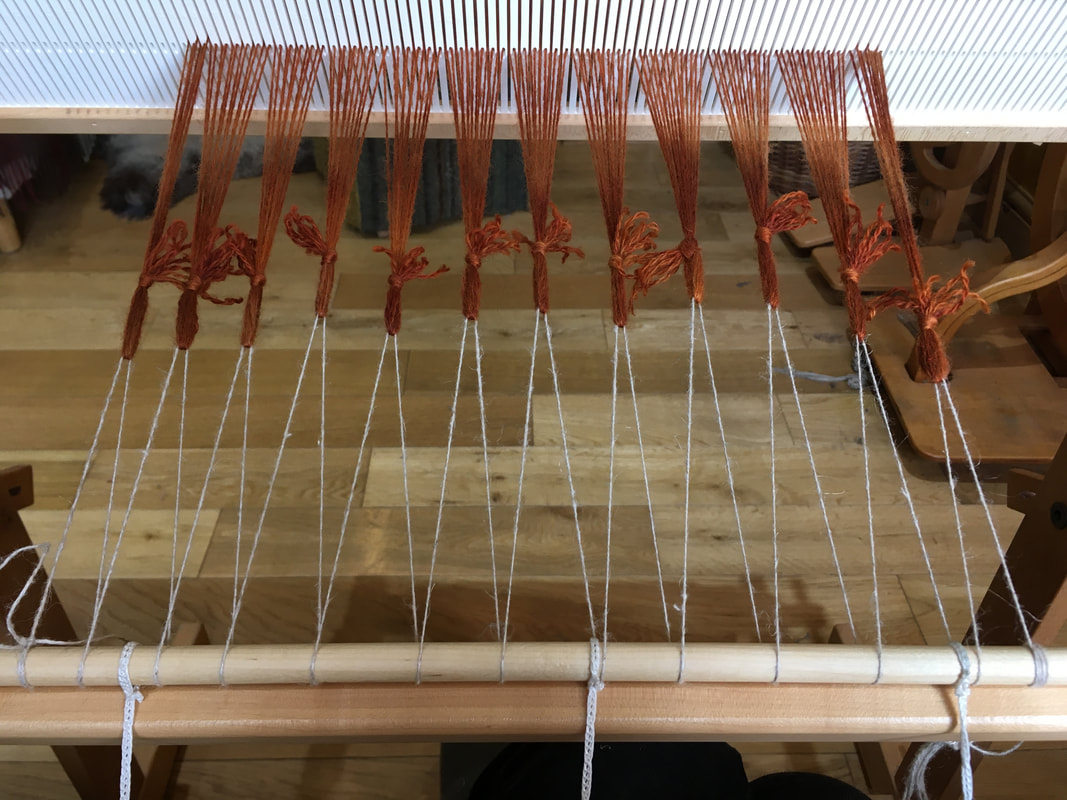
 RSS Feed
RSS Feed


